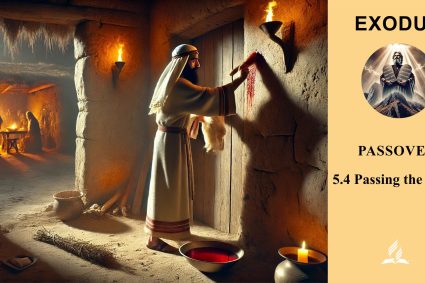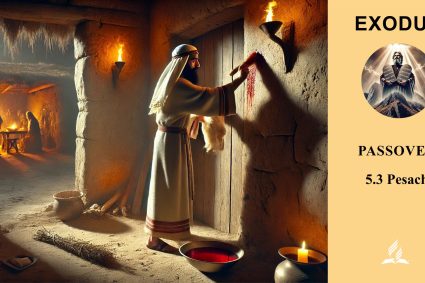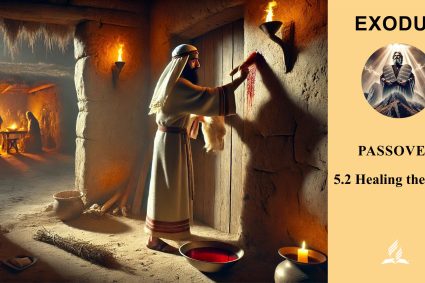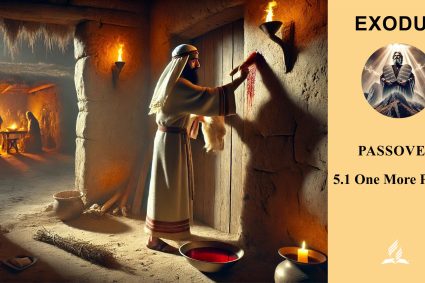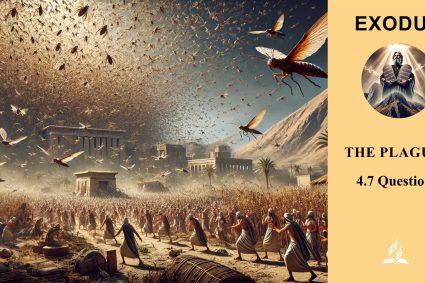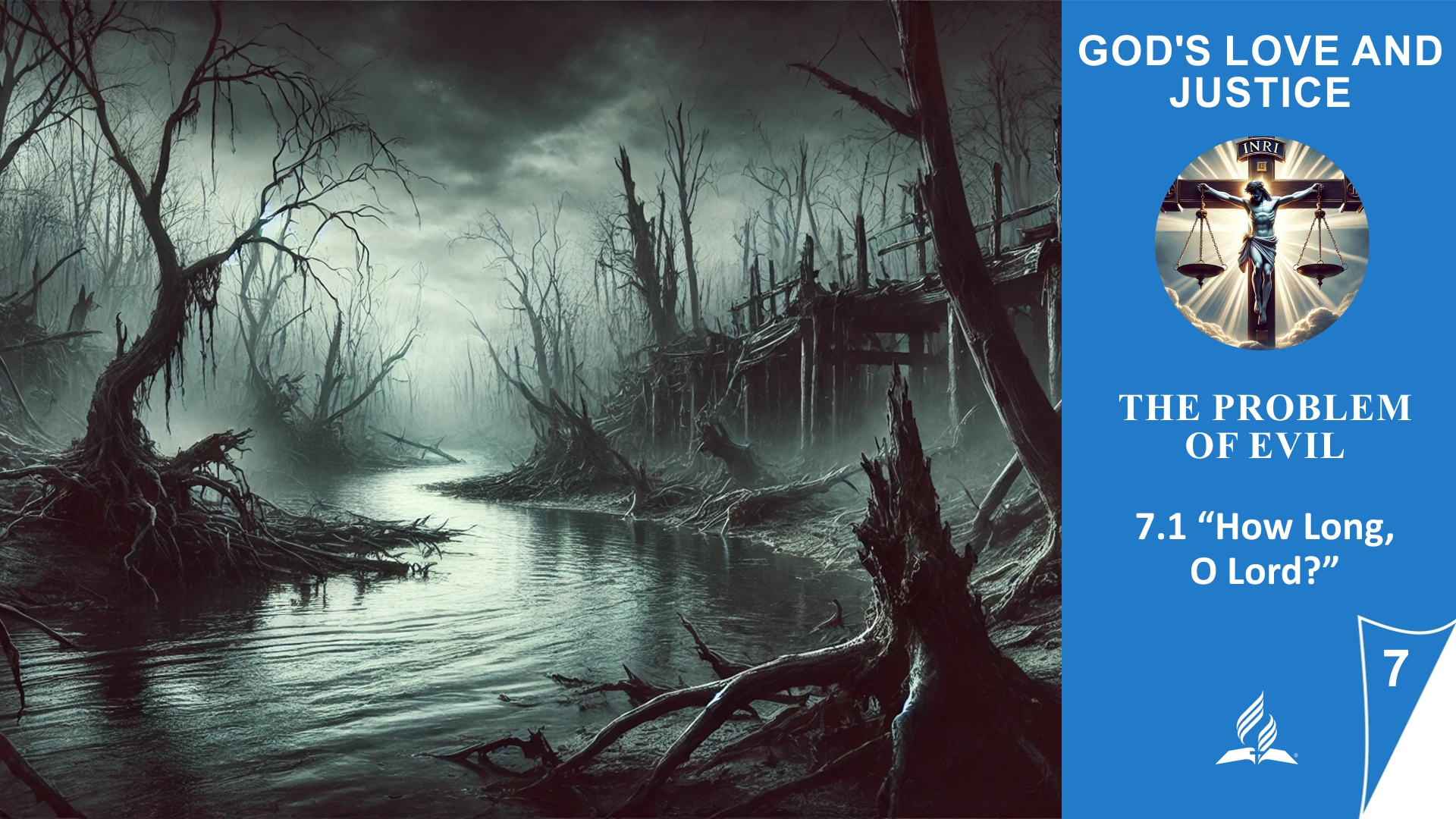

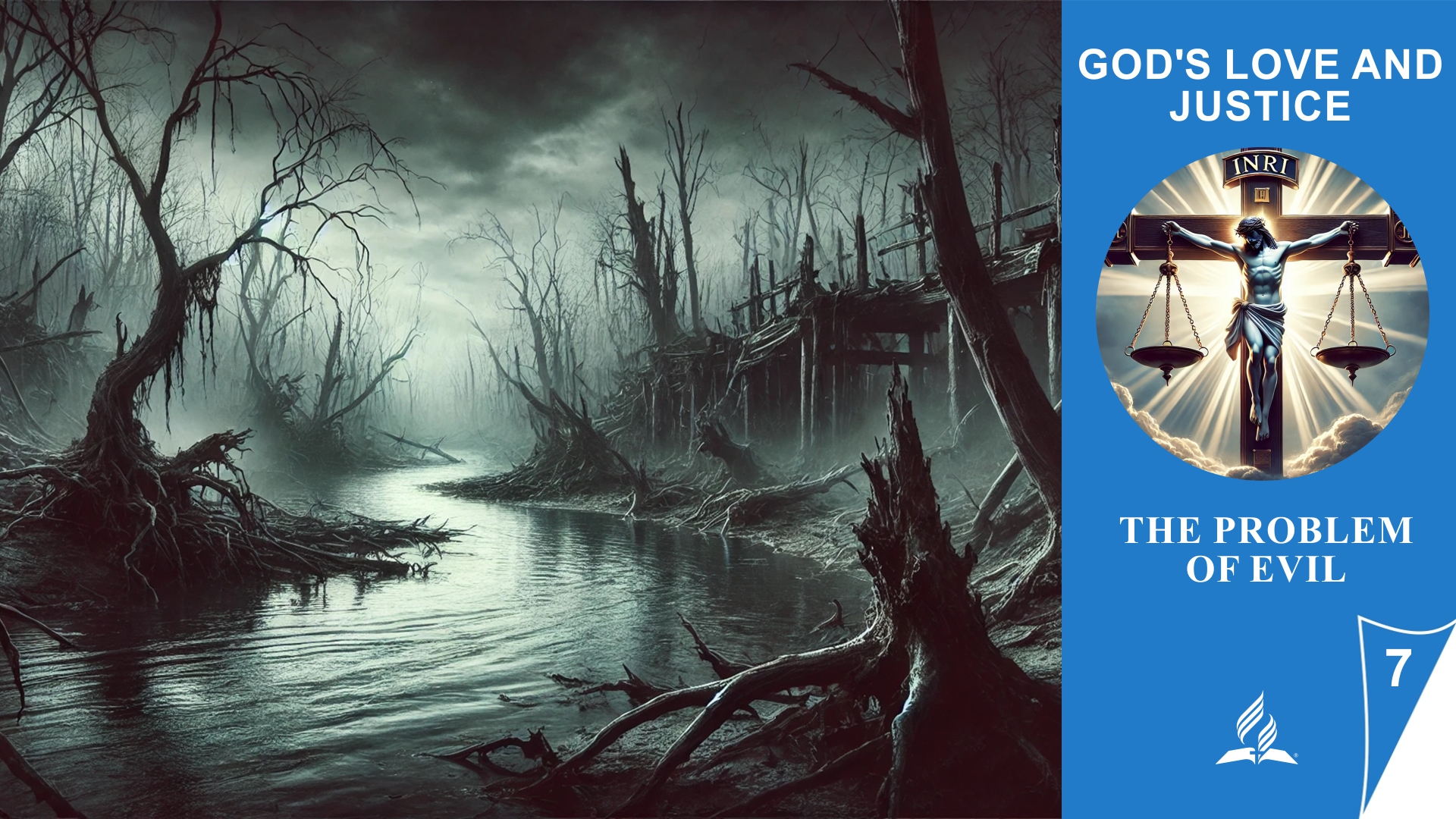
Lesson 7.The Problem of Evil
Why God Permits Freedom and How He Ultimately Defeats Evil
The problem of evil is one of the greatest challenges to our faith. If God is good and almighty, why then is there suffering, injustice, and pain in the world? This question has occupied believers and thinkers for centuries and remains as relevant today as ever.
In this lesson, we examine how the Bible explains the problem of evil and why God’s love and justice endure despite all the painful realities.
📖 The central themes of this lesson are:
✔ Suffering and injustice in the world – Why does God not intervene immediately?
✔ Free will and responsibility – Why does God allow choices that can lead to evil?
✔ God’s plan to overcome evil – What does the Bible say about final justice?
💡 This lesson is intended to help us strengthen our trust in God—even if we do not have all the answers. For one thing is certain: God is just, and evil will not prevail forever.
7.1 “How Long, O Lord?”
The Question of Suffering and God’s Plan of Redemption
Read Job 30:26; Jeremiah 12:1; 13:22; Malachi 2:17; and Psalm 10:1. How do these texts bring the problem of evil to the forefront of human experience?
The question of evil in the world and God’s apparent absence is one of the central challenges of faith. In Job 30:26, Jeremiah 12:1, Jeremiah 13:22, Malachi 2:17, and Psalm 10:1, we encounter people who, in the face of injustice and suffering, struggle. They see that evil often seems to triumph while the righteous suffer. Their laments and questions to God reflect a deep longing for justice—a longing that remains relevant today.
These texts show that the experience of suffering and injustice is not a new phenomenon. Even the prophets and psalmists wrestled with the same questions:
-
Why does it seem that God does not intervene?
• Why are the wicked allowed to prosper?
• Why does God sometimes feel distant?
The Bible does not offer simple answers to these questions, but it does not hide them either. Instead, it invites us to bring our laments and doubts before God. It shows us that we are not the first to long for God’s intervention. The cry, “Lord, how long?” runs throughout all of Scripture—from Job to Revelation.
Taking Evil Seriously
An important aspect of dealing with the problem of evil is that we must not trivialize it. Some try to explain the suffering of the righteous as a “test” or “part of a larger plan.” But this does not resolve the tension. Evil is real; it wounds, it destroys—and God Himself hates it. Yet the Bible shows us that God is not indifferent. He hears the laments of His people, and He promises to ultimately bring about justice.
A Perspective of Hope
Even if evil and injustice seem to reign temporarily, the biblical message is clear: God will have the final word. He will judge evil and comfort the suffering. In Jesus Christ, He has already shown that He not only sees evil but also shares in our suffering. The cross reminds us that God is not distant, but present in our midst as we suffer.
The question “Lord, how long?” remains current. Yet the Bible also gives us hope that God not only hears but will ultimately bring about justice. Until then, we are permitted to lament, cry out, and hope—in trust that God will turn everything to good.
Read Matthew 27:46. How do you understand these words of Jesus? What do they reveal about how evil has most profoundly affected God?
Jesus’ words on the cross belong to the deepest and most moving moments in all of Scripture. They reveal how evil has not only affected the world but also touched God Himself in Jesus Christ. The Son of God, who lived in perfect unity with the Father, experiences in that moment an unfathomable separation. But what does this “forsakenness” mean?
Evil in Its Full Power Against Jesus
On the cross, Jesus bears the sin of the world—and with it, the entire burden of evil. Isaiah 53:4–6 prophetically describes that He bore our sicknesses and was pierced for our transgressions. The evil, expressed in rebellion against God, reaches its peak here: the innocent becomes the bearer of sin and experiences what people truly deserve—separation from God.
This “forsakenness” is not only an expression of pain, but it also shows how serious evil is. It separates man from God. Jesus Himself takes on this separation so that we no longer have to be separated from God.
Psalm 22 – From Suffering to Triumph
Jesus does not simply cry out in despair; He quotes the beginning of Psalm 22—a psalm that starts with lament but ends with hope and victory. Anyone who reads the entire psalm will recognize that suffering is not the final word. The psalm speaks of God’s deliverance and of all peoples praising Him in the end. By speaking these words, Jesus indicates that the cross is not the end—it is the beginning of something greater: the overcoming of evil.
The Cross – God’s Answer to Evil
The astonishing thing about this moment is that God defeats evil not only from the outside, but by entering into our suffering Himself. Jesus suffers not only physically but bears the deepest consequence of evil: separation from God. Yet it is precisely through this that the way to reconciliation is opened.
Through Jesus’ death and resurrection, evil is ultimately defeated. Satan loses his power over those who believe in Christ. The question “Why have you forsaken me?” is answered in the resurrection: God did not abandon His Son permanently, but raised Him from the dead—a sign that evil does not have the final word.
Hope Amidst Suffering
These words of Jesus are a comfort to everyone who feels forsaken. They show that even Jesus knew this pain—but that this pain is not the end. Whoever suffers with Jesus will rise with Him. Evil will not last forever, for the cross is the turning point of history: what Christ accomplished there will one day utterly eradicate evil.
Thus, the cross is not only the deepest expression of evil but also the greatest hope for the world.
On the cross, Jesus looked upon a hope that He could not see at that moment. How can we draw comfort from His experience when we too see no hope?
On the cross, Jesus experienced the deepest moment of abandonment when He cried out, “My God, my God, why have you forsaken me?” (Matthew 27:46). Yet despite that darkness, He clung to God. He could not see hope, but He knew it existed. This is a central message for us when we ourselves go through times of despair.
-
Jesus Knows Our Deepest Distress
No matter how dark our situation is—Jesus knows what it means to feel abandoned. He suffered the deepest pain: physically, emotionally, and spiritually. Therefore, He can understand and empathize with our suffering (Hebrews 4:15).
When we feel distant from God, it does not mean that He is not there. Even when Jesus could not see or feel the Father, He knew that God’s plan was greater than the moment of suffering.
-
Faith Is Also Trust When We Cannot See
Jesus knew that the resurrection would come—but at that moment on the cross, He could not yet see it. His cry was genuine, yet His trust was deeper than what He felt.
We too often face situations where we see no solution. In such moments, we can rely on God’s faithfulness—not because we feel it, but because He is faithful, even when our feelings tell us otherwise.
-
Pain Is Not the End of the Story
Jesus died—but that was not the end. After the suffering came the resurrection. This shows us that our darkest moments are not the final word.
Perhaps we do not see hope now, but it is there. God’s plan is greater than our current suffering, even if we do not understand it.
-
Cling to God’s Promises—Not Just Your Feelings
Jesus knew that God would not abandon Him forever. He knew the promises of Scripture, especially from Psalm 22, which He quoted on the cross. The psalm begins with forsakenness but ends with victory and praise.
Likewise, we can hold fast to God’s promises—even if we feel or see nothing. His word is true, even if our situation seems otherwise.
-
Hope Means Moving Forward, Even When We See Nothing
Jesus could have given up on the cross—but He did not. He persevered because He knew that God’s plan was greater than His current suffering.
This is also an encouragement for us: persevere. The pain will not last forever. The resurrection will come.
Conclusion: Hope Is More Than a Feeling
Jesus’ experience on the cross shows us that hope exists, even when we cannot see it. When we are in darkness, we can draw comfort from His story:
• He knows our pain.
• He remained faithful, even when He could not see hope.
• God’s plan is greater than our current suffering.
• His resurrection shows that darkness is not the end.
Even when we see no hope, we can still trust that God has it in store for us. For the One who saved us on the cross will not abandon us in our darkness.
The problem of evil and the struggle for God’s presence is not merely a theological question—it is a deeply personal and everyday reality. Every person experiences moments of suffering, injustice, or despair, in which the cry “Lord, how long?” or “My God, why have you forsaken me?” rises from their heart. But what do these biblical truths mean for our daily lives?
-
We May Be Honest with God
In the texts from Job, Jeremiah, Malachi, and the Psalms, we see that even the greatest examples of faith did not shy away from bringing their doubts and pain before God. Faith does not mean always being strong or understanding everything—it means coming to God honestly, even with laments.
Practical Application: In difficult times, we may pour out our suffering to God. We do not have to pretend that everything is fine. Prayer is not only for praise, but also for honest questions and tears.
-
Trust in God’s Justice, Even When It Is Not Yet Visible
It often seems that evil triumphs and the righteous suffer. This experience was known to the prophets and psalmists. Yet the Bible assures us: God will bring about justice—even if it does not happen immediately.
Practical Application: When we experience injustice—whether in society, at work, or in relationships—we are called to have patience and trust in God’s justice. This does not mean we remain passive, but we can trust that God will eventually turn everything to good.
-
Hope Is a Decision—Not Just a Feeling
Jesus could not see hope on the cross, but He clung to God. In our everyday lives, there are moments when we do not feel God’s presence, when our faith is tested. Yet true hope means moving forward even when we do not see the solution.
Practical Application: When we feel abandoned or hopeless, we can hold fast to God’s promises. This means intentionally clinging to His word, even if our hearts doubt.
-
Evil Is Real—but It Does Not Have the Last Word
Sometimes we want to downplay evil to feel better. But the Bible clearly shows: Evil exists and causes great suffering. At the same time, the cross is proof that God does not ignore evil but has defeated it.
Practical Application: When we live in a world full of suffering and injustice, we should not fall into resignation or cynicism. Instead, we are called to be beacons of hope—through our actions, our prayers, and our trust in God’s ultimate victory.
-
We Live Between Good Friday and Easter Sunday
Our life as Christians often takes place between the pain of Good Friday and the hope of Easter Sunday. We experience both: the cross and the resurrection. Sometimes our lives may feel like Good Friday—dark, forsaken, without answers. Yet the story of Jesus shows us that the resurrection is coming.
Practical Application: In difficult times, we should always remember: our suffering is not the end. God has promised us a future—even if we do not see it now.
Conclusion: How We Can Live Out This Hope Daily
These biblical truths are not merely theories—they are crucial for our daily lives.
✔ We may be honest with God—lamenting is allowed.
✔ We may trust in God’s justice—even if it is delayed.
✔ We choose hope—even when we do not feel it.
✔ We recognize evil, but know that God will defeat it.
✔ We live in the assurance that the resurrection is coming.
So when we face challenges in our daily lives, we can look to the example of Jesus: He clung to God even when He could not see Him. And we, too, can do the same—because God’s plan is greater than our present suffering.
God is there, even when we do not feel Him— the cross shows us that hope lives even in the deepest darkness.
(Visited 28 times, 1 visits today)















